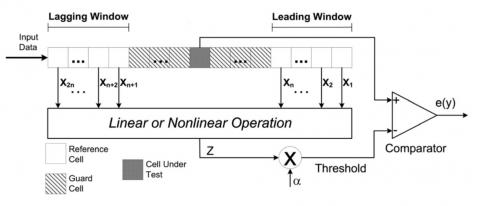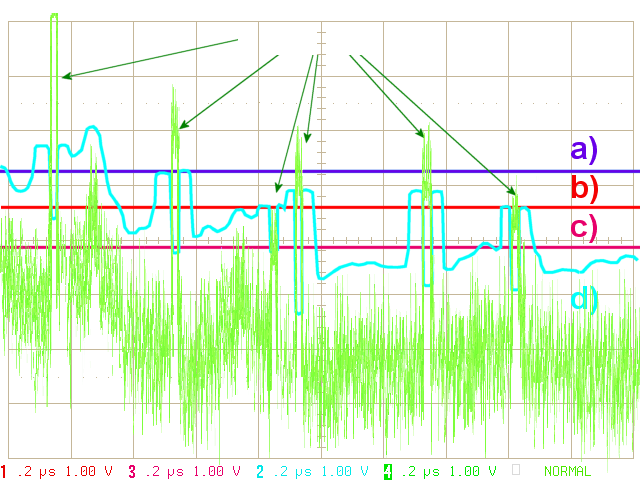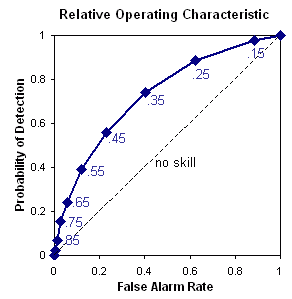Constant false alarm rate
The false alarm rate (FAR ) is a score for the work of the air surveillance radar. Echo signals are shown in the radar receiver is always in front of a background noise. The noise signals occur randomly on with amplitude corresponding to those of useful signals, and processed as such. This leads to the display of false targets. Lower false alarm rate is defined as the average number of false targets that can be discovered in a given time, for example, per antenna revolution or per pulse repetition period ( PRT) at the receiver output.
The false alarm rate is to have as low as possible. It is the ratio of the existing number of false alarms to the maximum possible number of false alarms. A maximum number of false alarms is determined by the number of possible target detections. In a digital radar which is the number of range Cells. In an analog radar, the maximum possible number of false alarms is determined by the ratio of received time to the transmitting pulse duration. The false alarm rate can be calculated as the following formula:
The mean level of the noise is set inter alia by the size of the basic gain of the receiver. With a threshold value is set up to which the noise amplitude is limited and reflect the aims to show at what voltage value. In the graph on the real target echoes are dark green in against the bright green noise. All pulses which exceed the corresponding voltage value ( a to d), are shown on the display device. The choice of the threshold voltage then determines the false alarm rate. In practice, false alarm rate can be tolerated in the order of about 10-3 to 10-4 in digital target processing. With an analog display, however, much higher values are taken into account, which are then compensated by the experience of the radar operator.
False alarm rate and detection probability influence each other. By increasing the receiver gain, the noise level is increased, and the false alarm rate increases. Same time, the probability of detection increases, because very weak target character now exceed the threshold. When tuning the radar apparatus that is an optimum compromise between both parameters must be found.
Constant false alarm rate ( CFAR )
Static threshold voltages, the false alarm rate is also dependent on the distance, because the STC circuit, the gain of the receiver is controlled time-dependent. Therefore, modern radars use circuits that can affect the threshold value as a function of the sensed environmental conditions and a constant false alarm rate ( CFAR ) throughout the duration of the deflection effect. The threshold is now no more static tension, but a example, the average noise level adapted voltage curve.
- Radar










